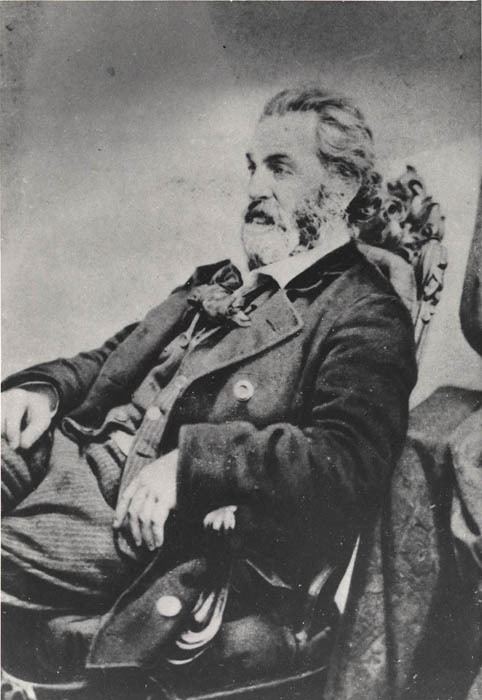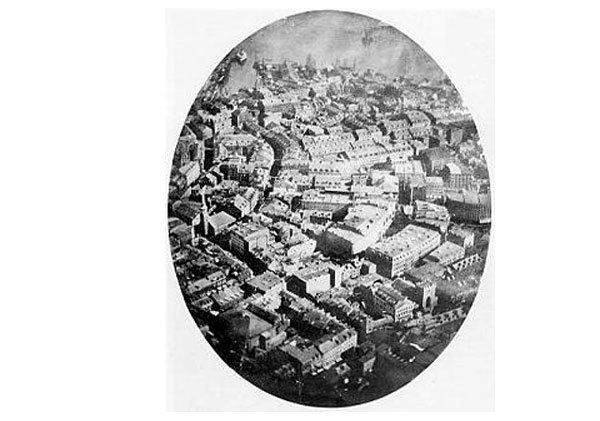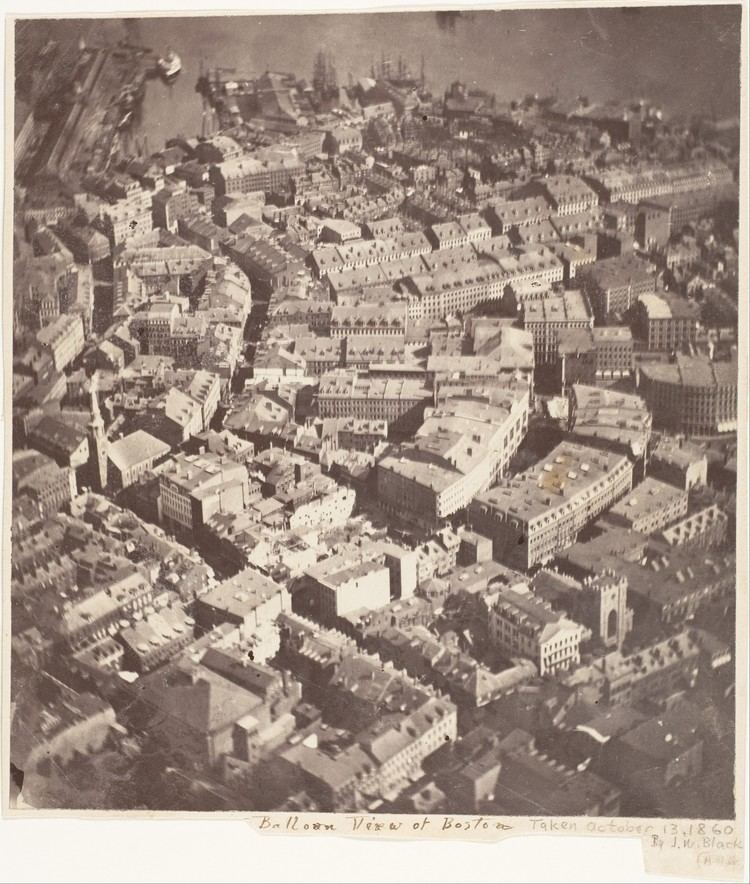Nationality American Name James Black | Role Photographer | |
 | ||
Died January 5, 1896, Cambridge, Massachusetts, United States | ||
The Oldest Surviving Aerial Photograph
James Wallace Black (February 10, 1825 – January 5, 1896), known professionally as J.W. Black, was an early American photographer whose career was marked by experimentation and innovation.
Contents

Biography

He was born on February 10, 1825 in Francestown, New Hampshire.

After trying his luck as a painter in Boston, he turned to photography, beginning as a daguerreotype plate polisher. He soon partnered with John Adams Whipple, a prolific Boston photographer and inventor. Black's photograph of abolitionist John Brown in 1859, the year of his insurrection at Harpers Ferry, is now in the National Portrait Gallery, Smithsonian Institution.

In March 1860, Black took a photograph of poet Walt Whitman when Whitman was in Boston to oversee the typesetting of his 1860 edition of Leaves of Grass. Black's studio at 173 Washington Street was less than a block from the publishing firm of Thayer and Eldridge, who apparently commissioned the photograph to promote the 1860 edition.
On October 13, 1860, two years after the French photographer Nadar conducted his earliest experiments in balloon flight, Black made the first successful aerial photographs in the United States in collaboration with the balloon navigator Samuel Archer King on King's hot-air balloon, the Queen of the Air. He photographed Boston from a hot-air balloon at 1,200 feet (8 plates of glass negative; 10 1/16 x 7 15/16 in). One good print resulted, which the photographer entitled "Boston, as the Eagle and the Wild Goose See It." This was the first clear aerial image of a city anywhere.
Almost immediately, aerial photography would be put to use by the Union Army in the American Civil War.
Black later became the authority on the use of the magic lantern, a candlelight-powered projector that was a predecessor of today's slide projectors. By the late 1870s Black's business largely consisted of lantern slide production, including his famous images of the Great Boston Fire of 1872, published a photographic album titled Ruins of the Great Fire in Boston, November 1872.
He died on January 5, 1896 and was buried in Mount Auburn Cemetery in Cambridge, Massachusetts.
